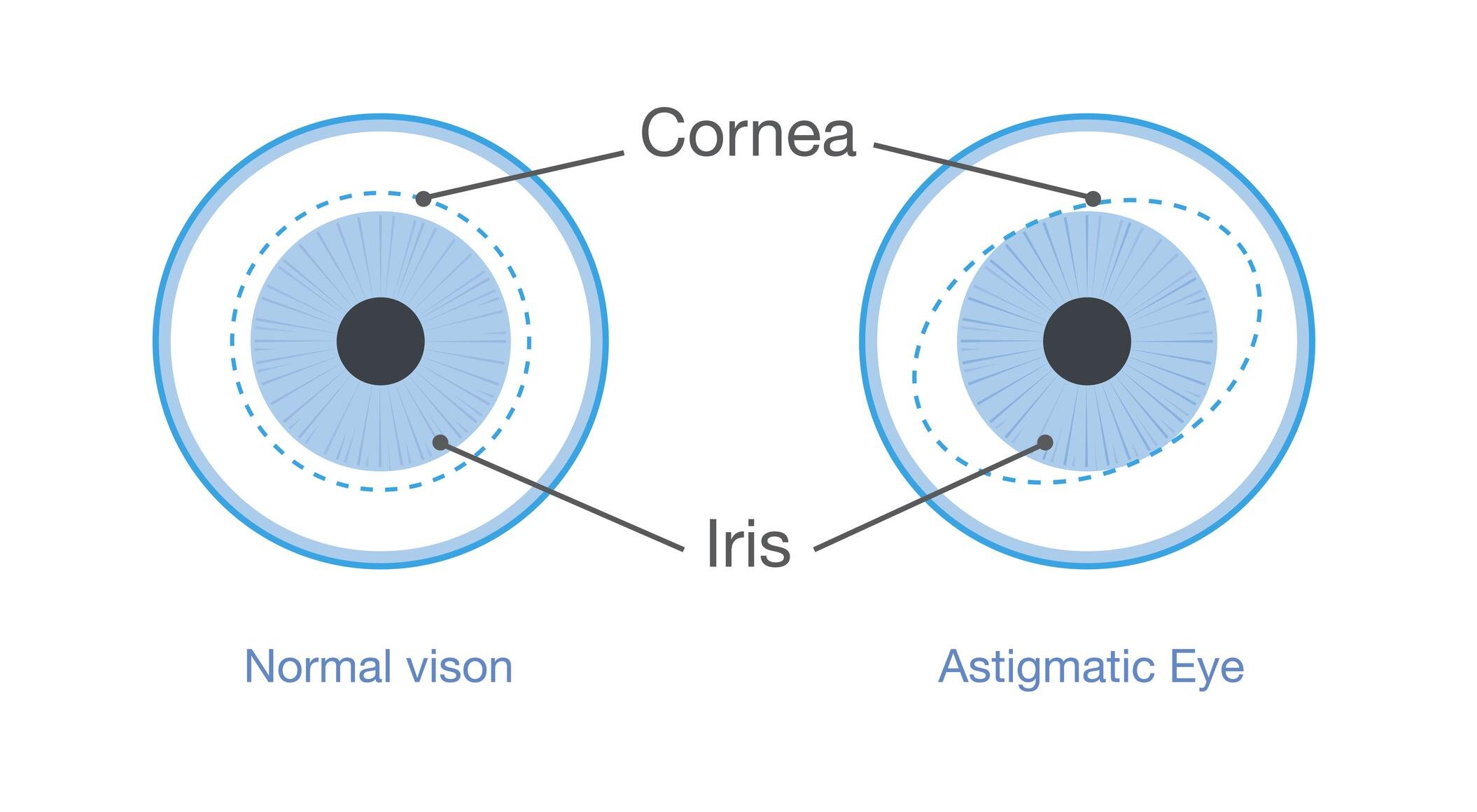What is Astigmatism?
Example of vision with Astigmatism. It is a type of refractive error in which the eye does not focus light evenly on the retina. This results in distorted or blurred vision at all distances
Astigmatism is not a disease but a common vision condition that causes blurred vision. Most people have some degree of astigmatism. Small amounts of astigmatism do affect vision but may not require treatment. Larger amounts can cause distorted vision, eye discomfort and headaches.
This refractive error occurs when the front surface of the eye (cornea) or the lens inside the eye is slightly irregular or cylindrical in shape. An irregularly shaped cornea or lens prevents light from focusing properly on the retina, resulting in vision being blurred or distorted at all distances.
Astigmatism often occurs with other vision conditions like nearsightedness (myopia) and farsightedness (hyperopia). Collectively, these vision conditions are referred to as refractive errors because they affect how the eyes bend or "refract" light.
What causes astigmatism?
Astigmatism occurs when the front surface of the eye (the cornea) or the lens inside the eye is more oval or cylindrical than round. The cornea and lens are mostly responsible for properly focusing light entering your eyes. This allows you to see things clearly. Astigmatism is caused by small differences in the growth and alignment of the components of the eye. Genetics may play a role in the development of refractive error. Astigmatism may also result from such factors as pressure of the eyelids on the cornea.
Sometimes astigmatism develops following an eye injury or eye surgery. In rare cases there is also a condition called keratoconus that may occur. Keratoconus is a condition in which the cornea becomes progressively thinner and cone shaped. This causes a large amount of astigmatism resulting in poor vision that cannot be effectively corrected with glasses. In these cases, the clearest vision is achieved with contact lens wear. Corneal transplants or other corneal treatments may be considered, depending on the case
Astigmatism often occurs early in life, so it is important to schedule children for a comprehensive eye exam with an optometrist to avoid vision problems in school from uncorrected astigmatism.
How is astigmatism diagnosed?
Astigmatism is detected using the same instruments and tools used to detect farsightedness and nearsightedness. A doctor of optometry (optometrist) can determine the amount of astigmatism present by measuring how the eyes focus light. They can then determine the power of any optical lenses needed.
Astigmatism Correction Options
Almost all levels of astigmatism can be optically corrected. There are several corrective options available:
properly prescribed and fitted eyeglasses
contact lenses
laser and other refractive surgery
From an article by Canadian Association of Optometrists

